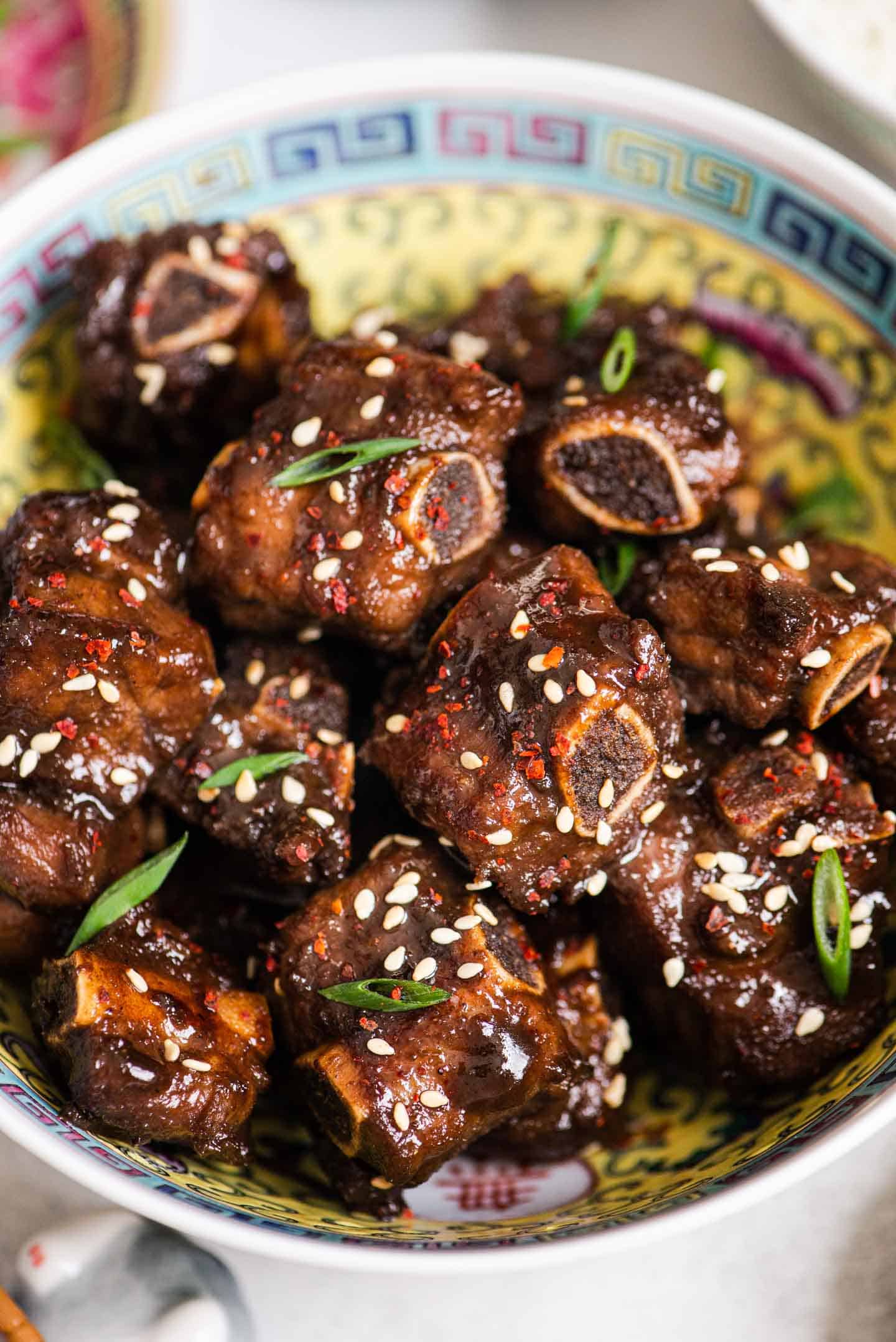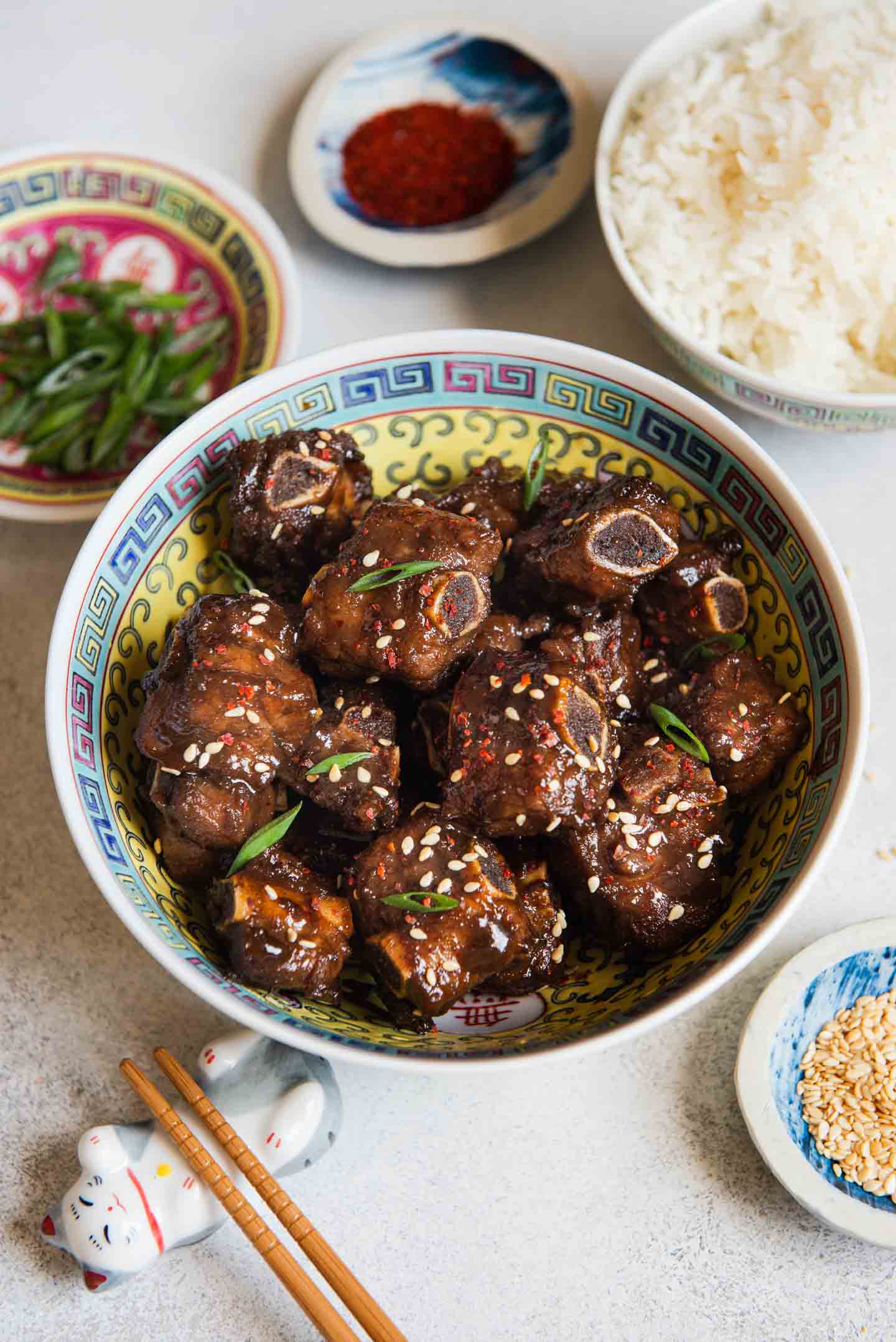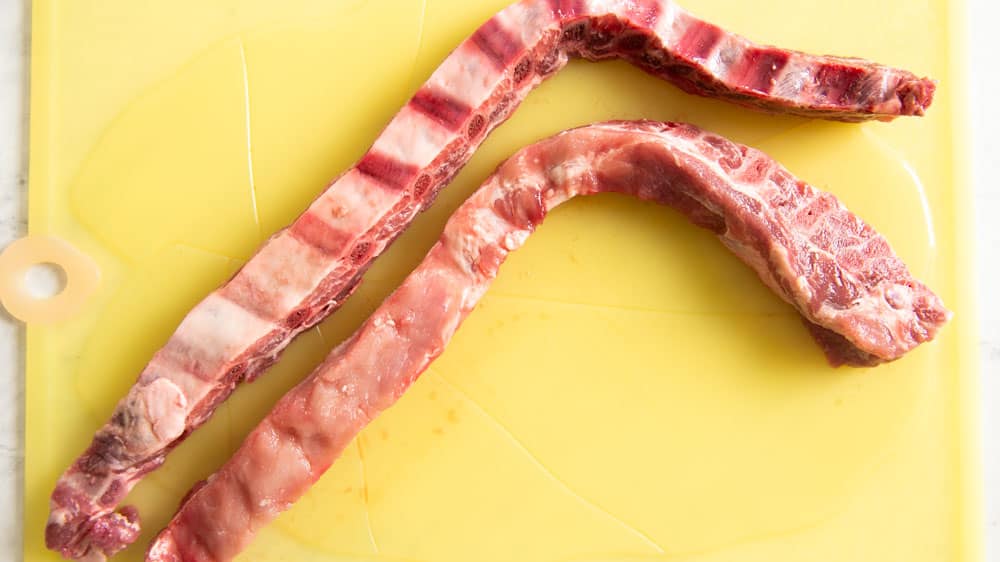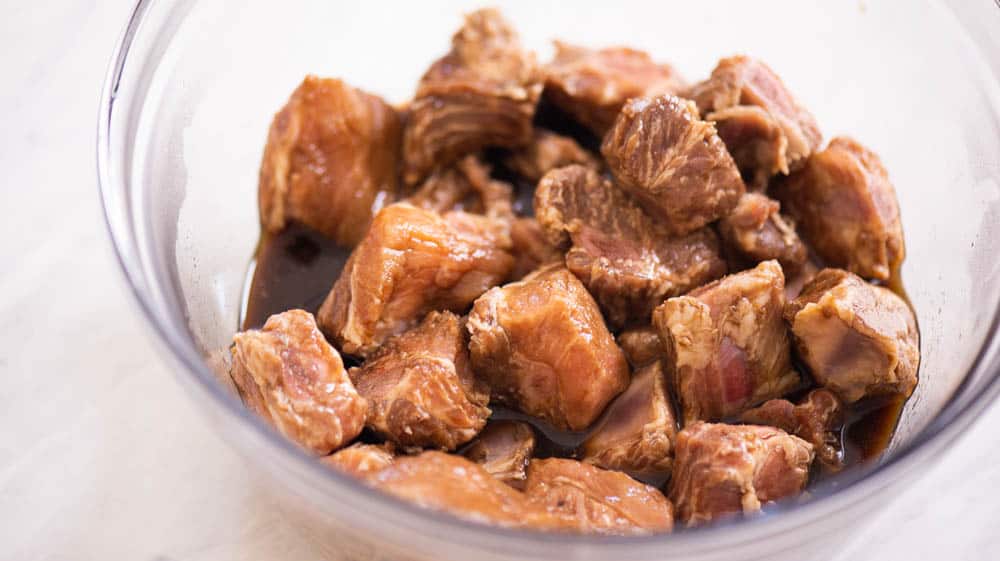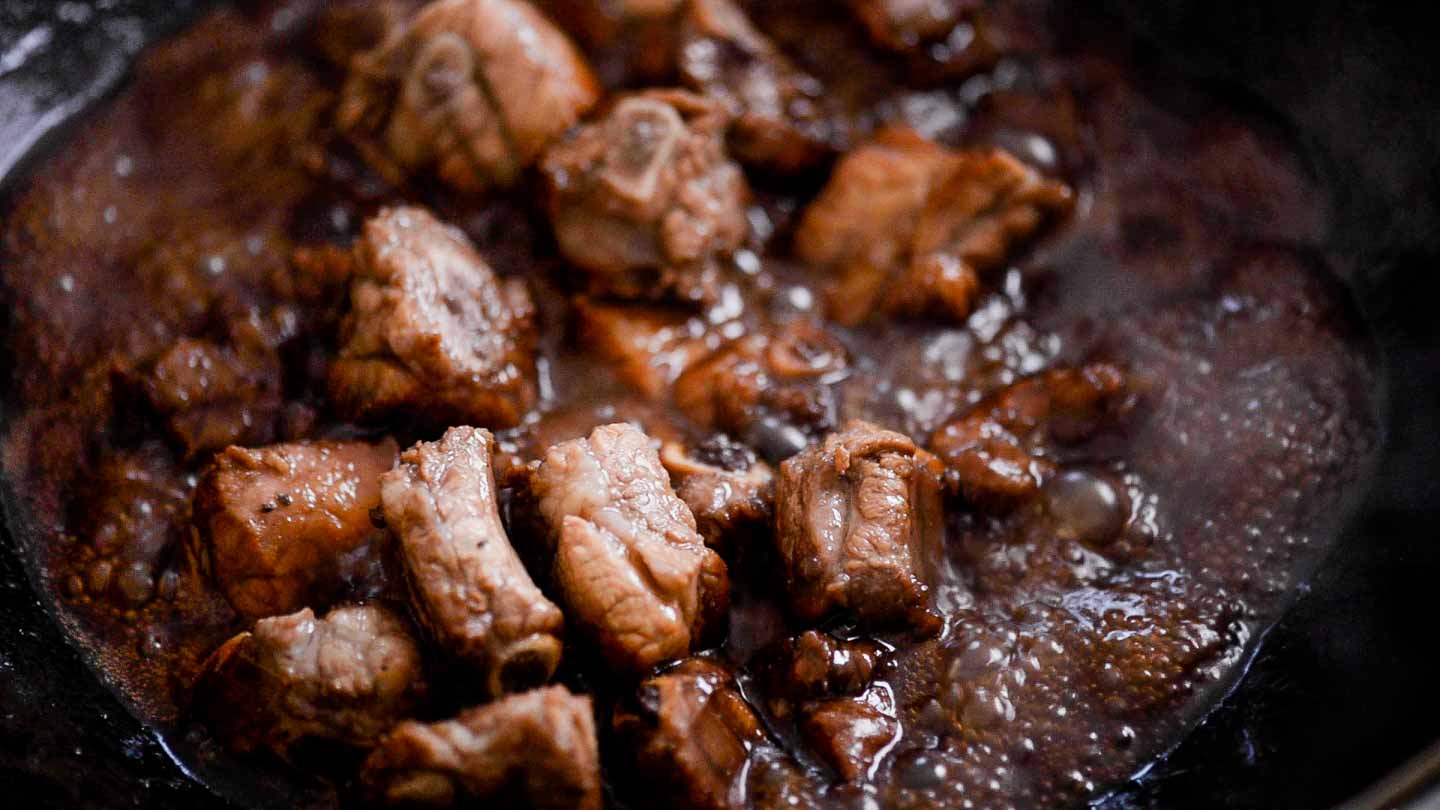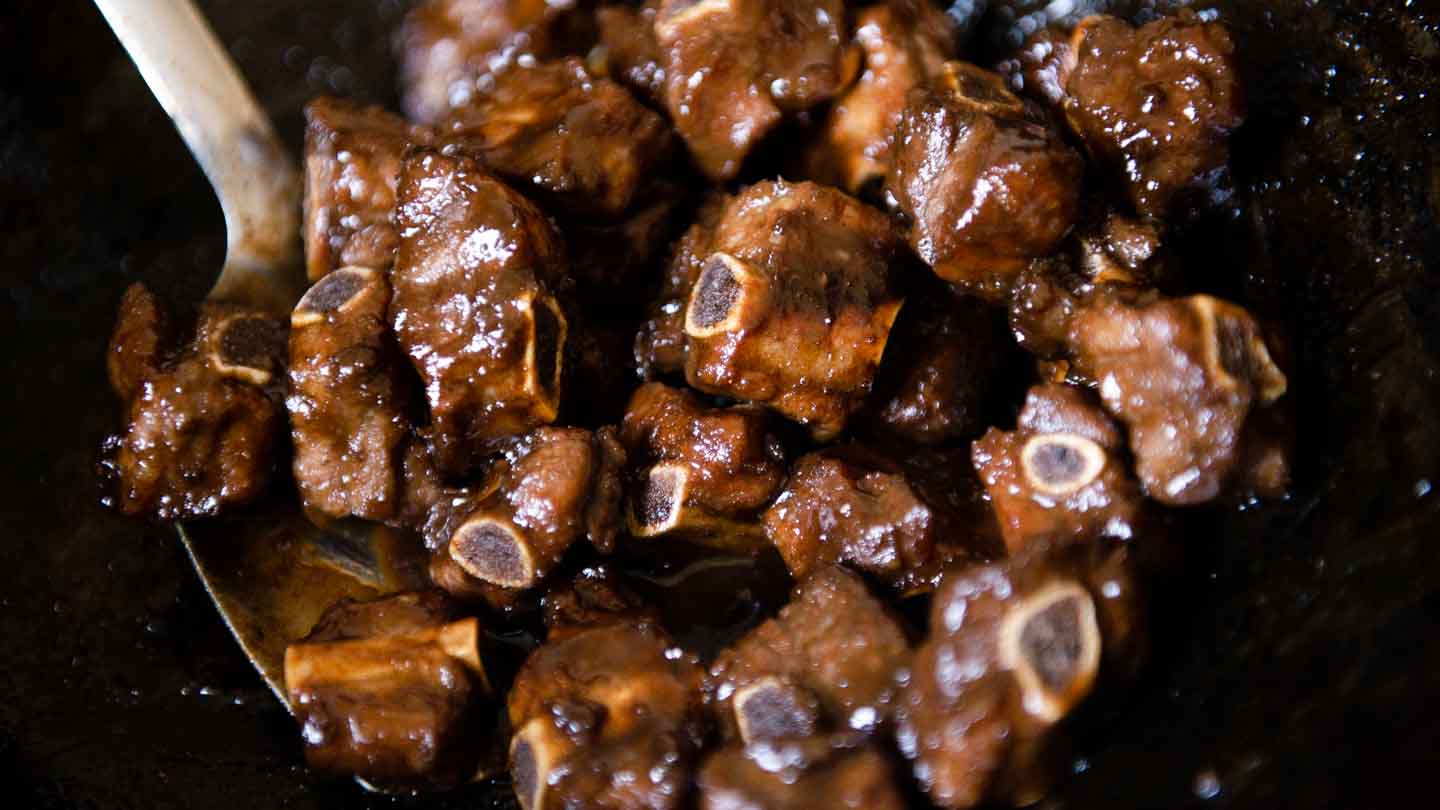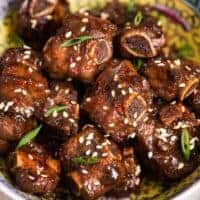Mama Lin’s sweet and sour ribs are a family favorite. In my family, it’s known as 婆婆排骨 (“grandma’s ribs,” po po pai gwut in Cantonese), which is what my nephews and niece would say when they requested the dish. My mom often makes these ribs for my family gatherings because they’re so easy to prepare and we all can’t get enough of them. The ribs are marinated in a soy sauce, sugar, and vinegar mixture and cooked until the marinade caramelizes around the meat. The ribs are so flavorful that they’re finger-licking good. I’m excited that the National Pork Board has asked me to share Mama Lin’s sweet and sour ribs recipe as part of their Pork as a Passport campaign. This campaign highlights the diversity of pork dishes from various cuisines across the world and how these dishes play a central part in family gatherings. I’ve already shared my cha siu recipe (Chinese BBQ pork) for this campaign, and I wanted to highlight the versatility of pork by sharing a recipe using ribs. Mama Lin’s sweet and sour ribs recipe is inspired by a popular Chinese homestyle dish called 糖醋排骨 (literally sugar and vinegar spareribs; tang2 cu4 pai2 gu3 in Mandarin). Years ago, Mama Lin’s friend taught her a simple formula for making sweet and sour ribs. After a while, Mama Lin made her adjustments to the recipe, which is how we got to this recipe. The beauty about these ribs is that you can serve them with a variety of dishes. You can make it the centerpiece of the meal by serving it with egg fried rice or stir fry noodles. Alternatively, you can serve the ribs with jasmine rice and a few sides, such as Chinese garlic green beans and stir fried shredded potatoes.
HOW TO MAKE SWEET AND SOUR RIBS
PREPARE THE RIBS
For this sweet and sour ribs recipe, I prefer using back ribs (also known as baby back ribs) over spareribs because the bones on the back ribs are smaller and the meat is more tender. Back ribs come from the ribs around the pork loin (essentially, the pig’s back). Spareribs, on the other hand, come from the belly area and the bones are usually larger. If you can’t find baby back ribs easily, you can use spareribs. When purchasing back ribs, try to find ribs that are sold in long strips that are between 1 to 1.5 inches wide (see photo above). These strips of ribs are usually easier to find in Asian supermarkets because many Asian recipes use shorter pork ribs. If you can only find back ribs sold in large pieces, ask the butcher to cut the pork into strips. Before slicing the ribs into smaller pieces, check the bone side of the ribs and remove any membrane (or silverskin) that’s covering the bones. In the photo above, you can see that there’s a white layer of membrane covering the top strip of ribs. That layer can turn leathery once cooked and it can prevent the marinade from penetrating the meat. You can use your fingers to grab onto that membrane and rip it off. To cut the strip of ribs into small pieces, slice the meat in between the bones. Then, transfer all the pieces of ribs into a bowl.
MARINATE THE PORK
The marinade uses several ingredients: rice cooking wine, soy sauce, Zhenjiang vinegar, sugar, salt, and garlic powder. Zhenjiang vinegar (also known as Chinkiang vinegar) is a rice-based black vinegar with a malty flavor profile. If you can’t find this easily, use white vinegar or rice vinegar. Although they are similar in color, don’t use balsamic vinegar because it’s too sweet and there isn’t enough tangy flavor. Mix all the ingredients for the marinade together and pour it over the ribs. Coat the ribs with the marinade. Cover the bowl and refrigerate the ribs for at least 2 hours. I like stirring the ribs after an hour to ensure that all the ribs are evenly marinated.
COOK THE SWEET & SOUR RIBS
Heat some oil in a wok (or sauté pan) over high heat. Using tongs, extract the ribs from the marinade and transfer them to the wok. Stir fry them for about 1 minute. Then, pour the marinade into the wok and cover it with a lid. Reduce the heat to medium and cook the ribs for 7 minutes. Uncover the ribs. You’ll notice that there’s a lot of liquid in the wok. Increase the heat to medium-high and cook down the liquids until it’s almost completely reduced, about 3 to 4 minutes (see photo below). Stir the ribs frequently to keep them from burning. Turn off the heat and sprinkle toasted sesame seeds on the ribs. My mom likes serving the ribs with pieces of pineapple but that is optional. Transfer the ribs to a dish or a plate. Garnish the ribs with sliced scallions and red pepper flakes, if desired.
MORE PORK RECIPES
Pork and Cabbage PotstickersCrispy Vegetable and Pork Spring RollsCha Siu (Char Siu, Chinese BBQ Pork)
Disclosure: This post was sponsored by the National Pork Board. You can find out more about them on their website, Facebook, YouTube, or Twitter.
